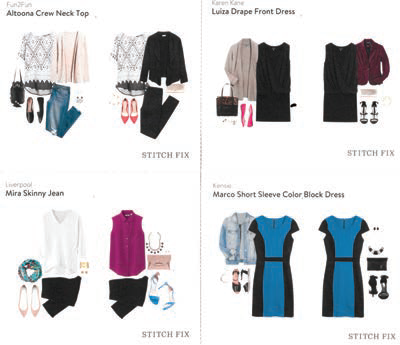3 Tips to Compete with Subscription Services on Social

Subscription services are having huge implications on how retail transactions are being played out on social channels.
From Bombfell (a men's personal stylist clothing subscription) to Stitch Fix (a similar idea, but for women) recurring shipments of personalized product collections are filling up social newsfeeds because users of these services are compelled to compliment (or complain) about the latest items selected for them - even requesting advice from their peers on whether to purchase items or not.
These companies are benefiting from this user-generated content and the corresponding social media publicity in myriad ways, but more traditional retailers can too.
For the unfamiliar, these services charge a monthly fee or a one-time styling fee ($20 in the case of Stitch Fix) to pull items from shelves (digital or otherwise) to meet a user's clothing needs. It's proving to be an accessible and convenient alternative to scouring the 'Net or the mall for a perfect outfit for a wedding, trip or everyday life.
These services look for the best options by first getting a client's measurements and style preferences. Using this information (even a person's Pinterest boards), Stitch Fix's recommendation algorithm then matches inventory to clients with the help of "expert"¬ù human stylists according to the company. Items are then sent to the person's home for her to try on and keep or send back. With Stitch Fix, items not kept are simply put in a pre-labeled/paid mailing bag (much easier than most ecommerce returns).
Through technology (e.g. personalized style quizzes, checklists, profile matching, etc.) and direct feedback (e.g. "I would have liked this if"), both Stitch Fix's algorithm and staff learn what a shopper will want to buy in the future to improve the next "Fix"¬ù - what the company calls the curated shipments of clothes it sends to its clients.
The reason why these experiences are being shared so often on social media networks is because they are convenient and luxurious. Traditional retailers looking to increase social sharing may want to implement a few of their tactics.
1. Help Customers Help You
When brands provide genuine value, customers are more likely to share their experiences. Stitch Fix's "styling cards," for example, show customers how they can wear the pieces received with items they may already own (see image). By helping customers in this way, Stitch Fix customers are actually helping the company by sharing these cards (along with pictures of themselves in the outfits) within social media channels. They are doing so quite frequently on Instagram, where many brands still don't have a presence.

When companies are helpful, they can create brand advocates for them on networks they may not be on quite yet and then evaluate whether resources should be spent on those particular channels. The challenge of being helpful, however, is being helpful at scale.
Even without a technology backend to support an initiative like Stitch Fix's, any retailer can use transactional data to identify popular items and make recommendations to customer groups.
2. Show Appreciation by Featuring Customers
Stitch Fix clients are sharing their "Fixes"¬ù throughout the Web and inspiring their friends to try the unconventional service. The result is that the company is benefiting from word-of-mouth marketing from its brand advocates, as well as the content they are creating. As a retailer, why not take advantage of that good will?
While most Web professionals know the benefits of content marketing by now (e.g. improvements in engagement metrics and, hopefully, conversions), producing an adequate amount of content proves difficult. In the case of a company where consumers are creating content for them, it's quick work to reach out to social fans, ask if they'd be willing to share their experience (for example, a Q&A for the blog that profiles or features them - and their good choices - in a flattering way). This could (1) create a customer for life, (2) inspire others to share their purchases and (3) provide the company with quick, compelling content that answers other customers' questions and can be shared across channels.
See a list of other no-brainer retail content.
Group-Gifting Online
GiftStarter is bringing a collaborative approach to the experience of giving, receiving and fulfilling gifts online. Read more on how GiftStarter is disrupting social commerce.
3. Make an Immediate Impression
Many retailers think of the packaging that their products are sent in as an operational line item, but marketers within organizations have the ability to get involved and wow customers - and increase social sharing - by being thoughtful about the box, tape, tissue paper and more.
Subscription companies like Birchbox and Stitch Fix (see image below) take great care in how shipments are presented and other companies should too.

In fact, Dotcom Distribution found that shoppers are 1.5 times more likely to share pictures of gift-like boxes on social than traditional brown boxes.
Consumers are also taking pride in purchasing products from companies that offer sustainable packaging. Dotcom Distribution found that 61 percent of consumers have considered green packaging when deciding where to shop. Check out more info on the costs, pros and considerations of offering sustainable packaging.
While many retailers can find ways to compete with companies like Birchbox, Bombfell and Stitch Fix in the subscription and personalization space (read, "Top Rules for Subscription Management"), their initiatives can get started right away on social, where a retailer only needs to be helpful, encouraging and thoughtful for customers to want to share their experiences with their peers.

Subscribe to Our Newsletter!
Latest in Social Media









